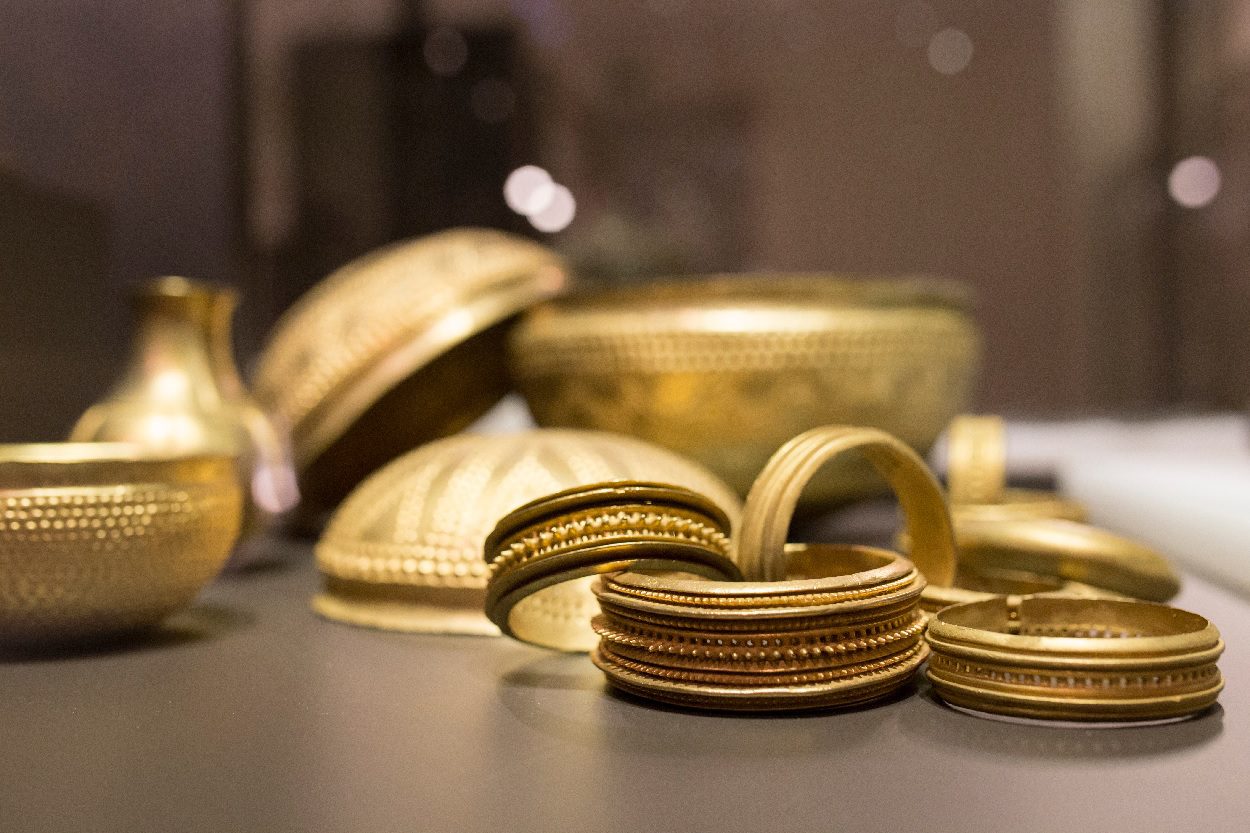A study published in the journal Prehistory Works, indicates that two objects sampled from the Villena Treasure were smithed using meteoric iron.
The paper, titled: “Meteorite iron in the Villena Treasure?”, was conducted by researchers from the National Archaeological Museum, the Diriyah Gate Development Authority (Saudi Arabia) and the CSIC Institute of History.
The Villena Treasure is one of the most important Bronze Age hoard finds in the Iberian Peninsula, discovered by José María Soler in 1963 in Villena, Spain. Archaeologists uncovered a collection of bowls, bottles, and bracelets, which were ornately crafted from gold, silver, iron and amber.
Iron was considered a precious metal before the advent of iron smelting, where meteoric iron was the only source of iron metal used to make jewellery, tools, and weapons during the Bronze Age.
Iron sourced from meteorites is generally composed of an iron-nickel alloy (Fe-Ni) with a variable nickel composition that is usually greater than 5% by weight.
The study conducted an analysis of two objects from the Villena Treasure made from iron. One is an iron bracelet, and the other is a small hollow semisphere adorned with an openwork sheet of gold, believed to be the upper part of a sceptre or staff.
Samples taken from the objects revealed that both pieces clearly indicate traces of iron and nickel, with visible peaks of Fe(Kÿ and Kÿ) and Ni(Kÿ and Kÿ).
Samples were then sent to Curt-Engelhorn-Centre of Archaeometry gGmbH to conduct a mass spectrometry study, revealing that the cap was most likely made from meteoric iron with a comparative reference to the global composition of the iron Mundrabilla meteorite that fell to the earth less than one million-years-ago.
According to the study authors: “The available data suggest that the cap and bracelet are the first two pieces attributable to meteoritic iron in the Iberian Peninsula, which is compatible with a chronology from the Late Bronze Age prior to the start of widespread terrestrial iron production.”
Villena Treasure – Header Image Credit : Shutterstock





